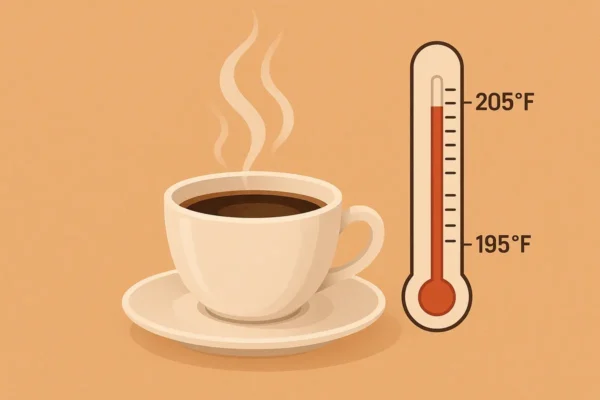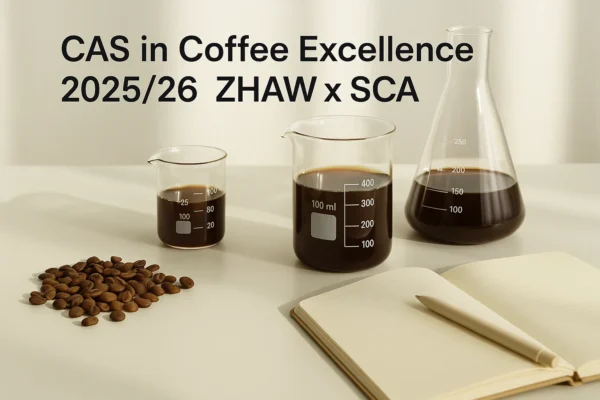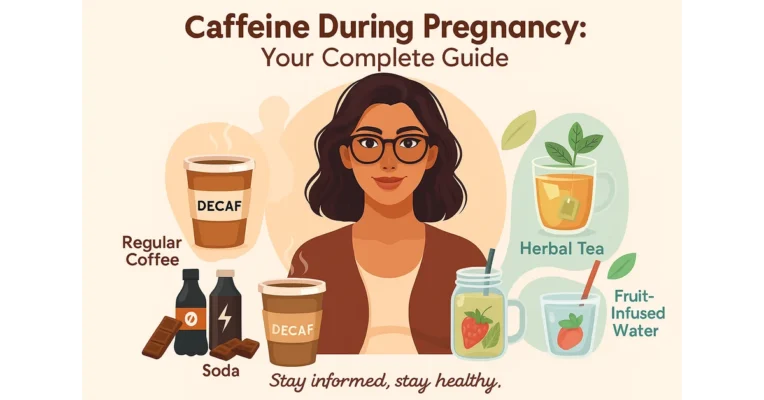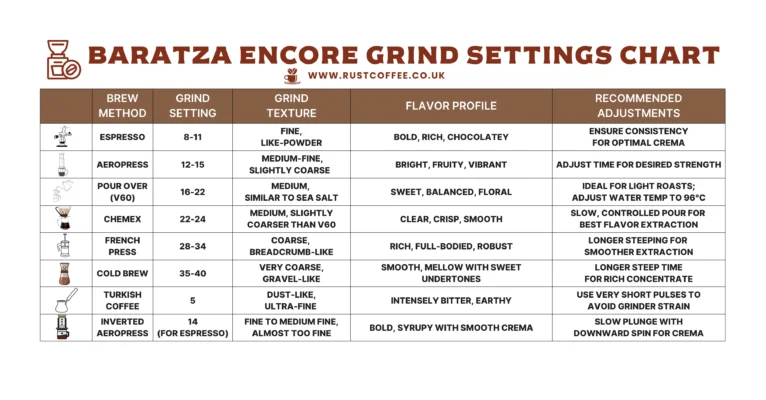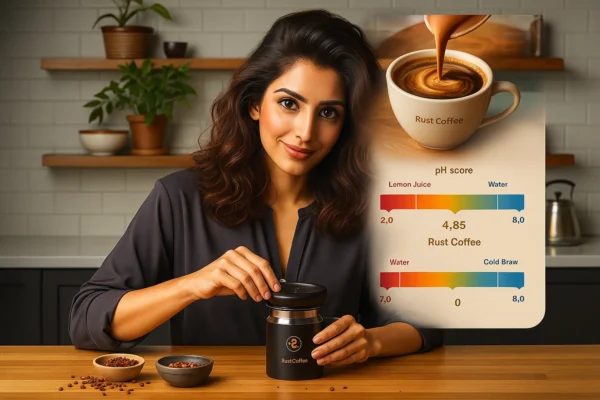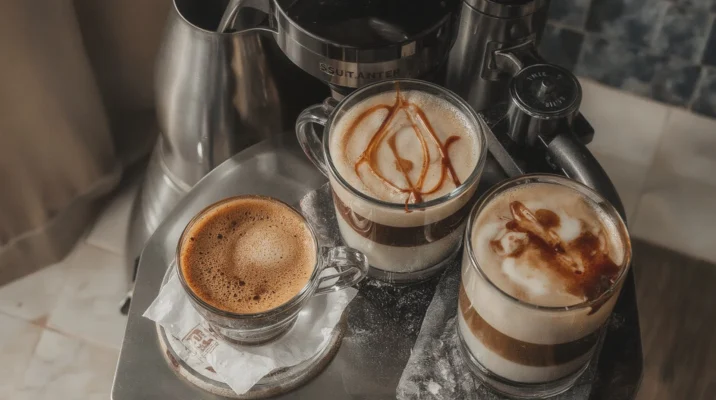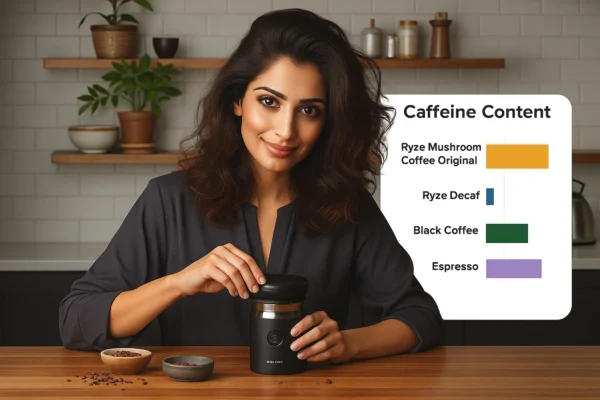What is the Best Temperature to Brew Coffee? Hidden Secret
Have you ever noticed how coffee tastes different depending on when and where it was prepared? Or why it can vary dramatically between sweet, sour, and bitter despite using identical beans? The cause could be much simpler yet more profound than you realize.
While we often focus on grind size, bean origin, and brew time when selecting coffee to drink, one silent yet potency variable that ultimately determines its flavor is water temperature.
It is the “Goldilocks Zone” of coffee brewing where everything must be exactly right to unlock truly exceptional flavors in every cup brewed. In this guide, I will demonstrate why selecting an optimal temperature to brew coffee can make all the difference in creating consistently delicious cups!
If you’re looking to improve your coffee game overall, make sure to check out our guide on How to Keep Ground Coffee Fresh and Preserve Flavor.
The Science of Extraction: How Temperature Impacts Your Coffee
As a Q-Grader, I have spent years examining the extraction process. Understanding extraction is critical when brewing coffee; hot water dissolves soluble compounds from coffee grounds (flavors, oils, acids, and caffeine) into solution efficiently at various temperatures of coffee brewing. The ideal temperature can determine just how efficiently these compounds dissolve into solution.
What Is Extraction?

Extraction occurs when water pulls compounds from coffee grounds to release flavors that define your cup, with temperature playing an integral role in how quickly and effectively these compounds are extracted.
The Ideal Brewing Temperature Range: What the Experts Say About the Best Temperature to Brew Coffee
What is the Best Temperature to Brew Coffee? The SCA Standard
The Specialty Coffee Association (SCA) recommends brewing temperatures ranging between 195°F to 205°F (90°C to 96°C). This temperature range has been identified as optimal brewing temperatures as it allows for the complete extraction of all necessary coffee compounds while simultaneously eliminating bitter flavors that might otherwise arise during extraction.

- Why This Range Works
At these temperatures, the ideal balance of acidity, sweetness, and bitterness is achieved, creating an exquisite coffee experience. Temperatures below 195°F lead to under-extraction, while anything higher than 205°F leads to over-extraction, which makes your coffee too bitter.
Check out how different types of coffee drinks vary in taste and how brewing temperature can affect them.
Infographic Table: The Best Temperature to Brew Coffee for Different Brewing Methods
| Brewing Method | Ideal Temperature Range | Temperature Effects on Flavor | Recommended Tools |
|---|---|---|---|
| Pour-Over |
198°F–205°F (92°C–96°C) |
Balanced acidity and sweetness; maintains clarity and complexity. | Gooseneck Kettle with Temperature Control |
| French Press |
195°F–200°F (90°C–93°C) |
Full-bodied, rich flavors; preserves oils and aromatics. | Stovetop Kettle with Thermometer |
| AeroPress |
175°F–200°F (79°C–93°C) |
Smooth, clean cup with controlled acidity. | AeroPress + Digital Thermometer |
| Espresso |
195°F–205°F (90°C–96°C) |
Balanced crema and shot quality; rich, aromatic flavors. | Espresso Machine with Temperature Control |
| Cold Brew |
35°F–70°F (2°C–21°C) |
Smooth, low-acid flavor profile with chocolatey notes. | Cold Brew Jar or Pitcher |
| Automatic Drip |
195°F–205°F (90°C–96°C) |
Consistent extraction but may lack complexity. | SCA Certified Drip Coffee Maker |
Too Cold: The Pitfalls of Under-Extraction
When your water temperature falls below 195°F, under-extraction could occur, meaning not enough essential flavors from your coffee grounds have been extracted for you to taste their full potential.
But What Are My Options If It Is Too Cold?
- Sourness: Without proper acid extraction, unripe lemon-like flavors emerge, reminiscent of unripe fruits such as grapefruit.
- Weakness: Watery mouthfeel with insufficient dissolved solids present.
- Grassy/Vegetal Notes: Flavors that did not fully extract.
If you want to avoid making weak coffee, you can also read How Much Coffee for Pour-Over Ratios for tips on getting the right brew strength.
Conclusion: Mastering the Best Temperature to Brew Coffee
Temperature is the silent force that drives every cup of coffee, and mastering it will elevate your coffee game. By keeping water temperatures within the 195°F- 205°F range, you will ensure consistent brewing of flavorful and well-balanced cups of java.
Refrence:
Read more on SCA Brewing Standards
FAQ’s About The Best Temperature to Brew Coffee
1. Why does water temperature matter so much when brewing coffee?
Water temperature plays a critical role in coffee extraction. According to the Specialty Coffee Association (SCA), optimal conditions for extracting coffee’s optimal compounds occur between 195°F-205°F (90°C-96°C). Too cold or too hot water could leave your beverage tasting either bitter or sour, respectively.
2. How can water temperature affect the taste of my coffee?
As noted in Home Barista’s article, water temperature plays an integral part in how acidity, oils, and sugars dissolve. At higher temperatures, bitter compounds extract more rapidly for an unpleasant bitterness. At lower temperatures, only acids and certain desirable compounds dissolve, causing sourness. Targeting an optimal range will ensure balanced acidity, sweetness, and bitterness levels in your coffee.
3. What is the “Goldilocks Zone” for brewing coffee?
The term “Goldilocks Zone” refers to a temperature range between 195°F-205°F (90°C-96°C) as recommended by SCA, in which optimal coffee extraction occurs, extracting sufficient flavor compounds for an aromatic cup. Extraction outside this ideal range may lead to undesirable flavors being extracted, such as either too few flavor compounds being extracted (under-extracted) or too many being extracted (over-extracted).
4. How does the brewing method affect the best temperature to brew coffee?
Different brewing methods require slightly varying temperature ranges for optimal performance, depending on their extraction time and heat retention properties. Pour-over coffee requires temperatures of 198°F-205°F, while AeroPress should brew at 175°F-200°F. These variations depend on extraction time and the heat retention capabilities of each method; methods involving longer contact with water, such as French Press, require careful temperature regulation for even extraction.
5. Can I brew espresso at a lower temperature than other methods?
Espresso brewing typically follows a temperature range between 195°F-205°F. However, the high pressure involved alters how water interacts with coffee grounds. Therefore, temperature must be kept consistent throughout this brewing method to create the right crema and balanced shot. Deviation outside this range could result in either burned or underdeveloped espresso shots.
6. Can the origin of coffee beans affect the ideal brewing temperature?
Yes, high-altitude beans tend to have denser structures and thus require slightly higher temperatures (up to 205°F) to extract all their rich flavors. Conversely, low-altitude or natural processing method beans typically benefit from cooler water temperatures to avoid removing too many bitter compounds.
7. How can I avoid brewing coffee that’s too sour or too bitter?
Sourness indicates an under-extraction problem caused by water that’s too cold; to fix this, increase the temperature by 2-5°F. Bitterness is often due to over-extraction that takes place when using too hot temperatures; in this instance, reduce brewing temperatures by 2-5°F to find balance with your coffee brew method. A thermometer will help you find your optimal temperatures!
8. What’s the difference between brewing coffee at 195°F and 205°F?
While both temperatures fall within the ideal range, 205°F is slightly hotter and recommended for lighter roasts to extract any more challenging-to-dissolve compounds more efficiently. At the same time, 195°F may be better suited to darker roasts to prevent over-extracting bitter compounds and maintain a more flavorful aroma.
9. What are some common mistakes people make with water temperature while brewing?
One of the primary mistakes when it comes to coffee brewing is using hot water directly from a kettle, as this can lead to over-extraction and make your beverage too bitter. Failing to pre-heat equipment causes heat loss during brewing, which results in under-extraction; always aim to use temperatures between 195°F-205°F for best results, using tools such as gooseneck kettles for precise extraction.
10. How can I test my water temperature for brewing accuracy?
Use a digital thermometer to gauge water temperature accurately. Gooseneck kettles that come equipped with built-in temperature controls offer more consistent results. For regular kettles, allow 30-60 seconds after boiling to let the water settle before adding more.
11. What are the effects of brewing coffee at different temperatures for cold brew?
Cold brew coffee is typically prepared by placing it at room or refrigerator temperatures between 35°F-70°F. The low temperatures extract flavors slowly, producing a less acidic cup. Cold brewing requires 12-20 hours for optimal extraction of flavors.
12. Can the type of water I use impact my coffee brewing temperature?
Filtered water is essential to efficient extraction. Hard or unfiltered water can alter how heat transfers to coffee grounds, leading to ineffective extraction. Softened or filtered water ensures temperature stability while making extraction more effective, ultimately leading to a superior-tasting cup!


